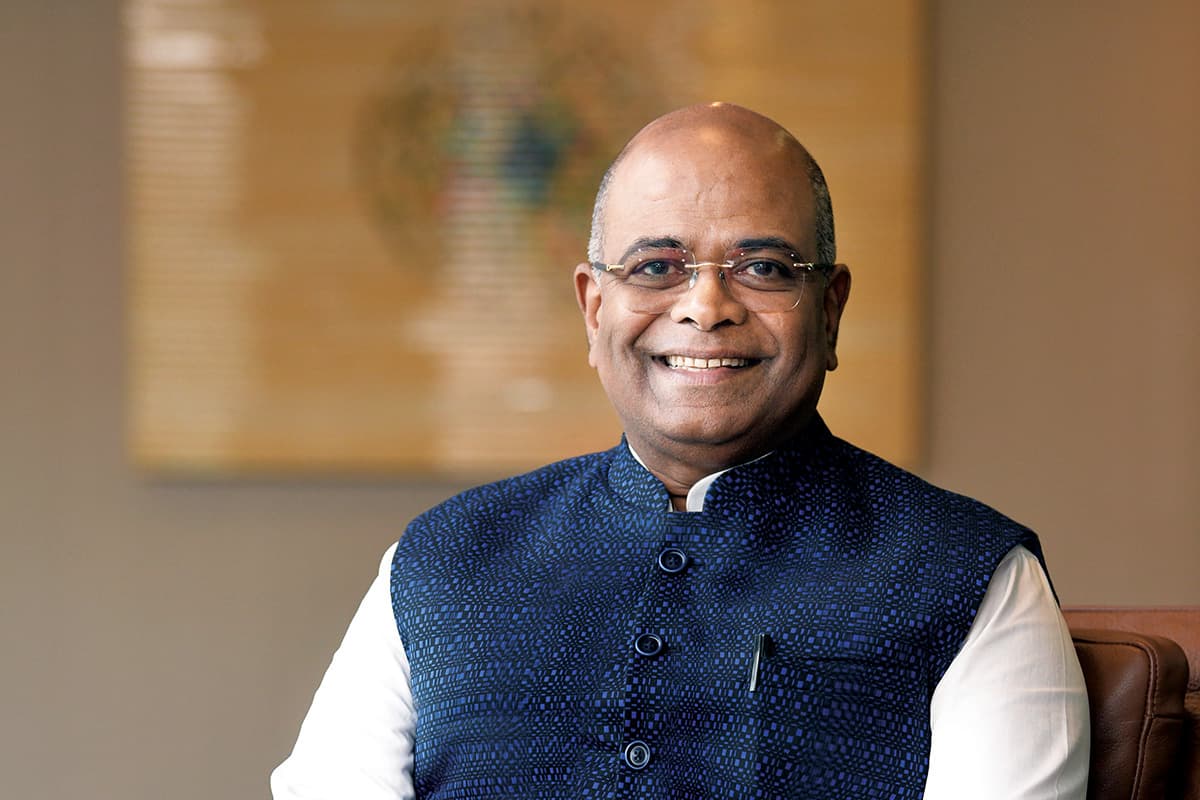
Two things can be true at the same time. One can not have enough time to learn a new skill and yet still have enough time to master it.
This is the intersection where a large number of working adults find themselves.
There is a veritable cottage industry of books about breaking out of middle management, but the main throughline in all the strategies is that upskilling is a necessity for any kind of movement, whether vertical or lateral.
Compounding this is the Covid-19 pandemic, which many said led to what was called the “Great Resignation”, essentially a fundamental shift of expectations in the workforce.
However, for Taylor’s University, it was a trend the education group already saw coming, according to its deputy vice-chancellor and chief academic officer Professor Dr Pradeep Nair.
“People were already changing jobs and even before the pandemic, there was already this growing sense of disillusionment in the workforce. There are studies of how people are willing to take up to a 15% pay cut to move to a company that shares their purpose,” he says.
“So, we found that there was a real demand for reskilling and upskilling. The pandemic simply hastened that.”
Nair further explains that since people now have a taste for what an alternative work environment can be, it is nearly impossible to put that genie back in the lamp. In an environment where the workforce is highly mobile, the need to have something else in the back pocket becomes even more crucial.
The numbers also make sense. Korn Ferry’s Global Talent Crunch study estimates that because of the rapid digitalisation taking place among companies now, this has left organisations with significant skill gaps. These threaten to cost companies US$8.5 trillion in annual unrealised revenues by 2030.
As such, the highly competitive postgraduate market has become even more so in this new endemic age. Forbes magazine reported that the worldwide e-learning market is estimated to be worth US$325 billion in 2025, from US$165 billion in 2015.
It then makes sense for Taylor’s University to expand its footprint into the online learning market, where not only the acceptance of virtual learning has increased but the technology is also mature enough to support its execution.
According to Pradeep, the other thing that makes Taylor’s 100% Online Postgraduate Programmes unique is that it is couched in the group’s digital capabilities.
“We had a choice — to work with online programme management (OPM) companies or do this ourselves,” he says. “We found that our main issue with OPMs is how they are structured. We would not have the freedom to deliver updated content for the benefit of learners, and going with an OPM would mean the group would be faced with constraints that add to the turnaround time.”
According to him, Taylor’s University had already written an e-learning blueprint back in 2011. It was the first to introduce lecture capture systems and it has always had one eye on the future. A strategy that has been justified by its ranking versus that of its peers.
Taylor’s University was one of the few Asian universities awarded the QS 5 stars rating for online learning, apart from being the top private university in Southeast Asia three times in a row, according to the QS World University Rankings 2023.
Pradeep points out another significant statistic. The university is ranked No 16 in the world on the Graduate Employment Rate indicator in the QS Graduate Employability Rankings 2022.
On-demand learning
Pradeep would be the first to admit that all the accolades in the world do not justify if the programmes are not engaging. At a glance, the programmes are a mix of delivery formats, encompassing videos, activities and discussions.
According to him, the main draw is how the course has been structured to closely follow the nano-learning model. Simply put, bite-sized videos and interactive content that students can access at any time, making it true on-demand learning.
“The truth is that attention spans these days are short. The interest to digest content in large amounts is not very high. So, the most important feature of this course is taking a subject matter that has typically been taught over 60 minutes and turning it into 25 to 30 bite-sized two-to-five-minute segments,” he explains.
Pradeep adds that this style of learning is truly adaptive to the schedule of the student who takes it. Whether it be a long weekend, during which they can sit down and finish the hour, or those who only have as long as a cup of coffee to take in a lesson.
“On-demand learning is not just about time. It is about what you need and what you might not need now but most likely will need later,” he says.
Taylor’s University is also mindful of the fact that the content alone does not make the course engaging. Neither is simply taking what is already taught in a face-to-face environment and transplanting it online.
“You have to remember that the online learning experience can be a lonely one. I know this from my personal experience. Because it is asynchronous learning and must be curated differently than face-to-face learning,” says Pradeep.
“As a business model, one of the key aspects of sustaining online learning is sustaining learner interest by providing two things: strong learning support and a social learning environment,” he adds.
Taylor’s University achieves this by adding an optional two-hour synchronous learning session each week. The session provides students with the opportunity to engage with their facilitator as additional support and allows them to speak to their community of learners so that they never feel alone.
“We think this weekly connection will be as important as all the other technology tools that allow for ease of communication. It allows students to post questions and comments, where interaction is almost continuous. This sort of real-time communication ecosystem is crucial,” says Pradeep.
According to him, reinforcing this will be the programme’s learning facilitators, whose task is to ensure the fullness of the students’ experience as well as keep the course running smoothly.
“They themselves are subject experts. So, if you are an MBA student, the learning facilitator will be an MBA graduate as well. Students will never feel like they don’t have support,” says Pradeep.
Apart from the Master of Business Administration, other programmes that have been offered since January include the Postgraduate Certificate in Education, the Master of Teaching & Learning, the Master of Applied Computing and the Master of Global Hospitality Management.
As for what the future holds in terms of new programmes, Pradeep says Taylor’s University currently has several irons in the fire.
“We are looking at law and communications. Communications is driven by the fact that the whole industry has been disrupted by technology. So, many in those fields are ripe for a refresh. The same is true for those in digital marketing and fintech, where extensive retraining is required. We are also exploring psychology, as we understand there is a lot of curiosity about it.”
So far, the interest in the courses is encouraging, with more than a thousand enquiries about the programme, he says.
“Our first intake in January came in at about 40, which is beyond our expectations. I want to state that we are not desperate to get thousands for this programme at this moment but rather, we want to get it right, to make the student experience almost perfect. To make these 40 students happy so they become our ambassadors,” says Pradeep.
He adds that the goal is to reach a market that is either untapped or underserved. This means bringing the Taylor’s University experience beyond the Klang Valley.
“But one more thing to note: we adopt an equal pricing policy. So, whether you do it online or on campus, you pay the same. Because what we are working on is delivering a master’s degree that is just as good as if you were here on our campus,” he points out.


